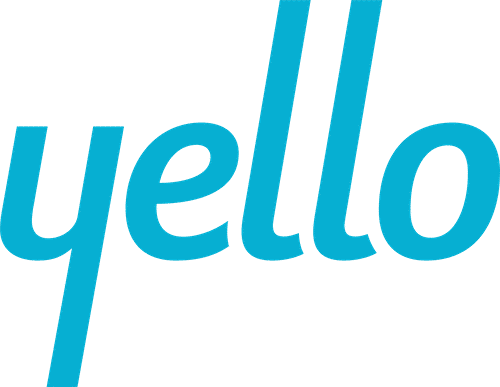When developing your upcoming hiring strategy, uncovering the job searching habits of recent graduates and the data behind their decisions can help your company better understand this target demographic. The 2017 Yello Recruiting Study analyzes the job search motivations and hiring process insights from more than 1,400 recent graduates. The second annual report compares 2017 vs. 2016 responses to help talent acquisition professionals better understand industry trends and adjust recruitment strategies from the previous year. As the respondent pool transitions from the Millennials to Gen-Z’s, this report will uncover the main differences and similarities between the two years — and two generations — and how talent acquisition teams can leverage these insights to make strategic hiring decisions.
Whether it’s understanding the reasoning behind acceptance rates, candidate referrals or job application trends, better understanding the data can help your organization continue to grow a culture that stands out to recent grads and entry-level talent. Companies looking to hire recent graduates can use this report to gain insight into career expectations of this demographic of upcoming talent, to accurately shape entry-level recruiting strategies.
Learning opportunities are valued more highly than salary.
For the second year in a row, respondents indicated the most important factors when accepting a job are learning opportunities (48 percent), followed by career growth (44 percent) and salary (27 percent). Understanding that this mindset continues among newer members of the workforce is key to creating the messages that resonate with the audience. These job seekers are most focused on continually learning on the job, and being certain there is a career path for them to follow.
Takeaway for talent acquisition teams: Whether your company offers growth plans or career development opportunities, discussing a success plan that includes specific checkpoints with candidates will demonstrate how your organization rewards hard work and ambition.
Time continues to be the enemy.
The time in which an offer is extended to a candidate is more important than ever. 74 percent of survey respondents said the lack of speed at which they received an offer is the reason they turned down another opportunity. This number is up from 69 percent in 2016.
Takeaway for talent acquisition teams: Companies can reduce decline rates attributed to slow hiring processes by investing in recruiting tools to help facilitate a faster hiring process, such as scheduling tools, video interviewing or evaluation management software.
Recent grads thrive on mass interviews.
Mass interview days — at a career fair or on-site at a company’s headquarters — are a reality for many large companies. One out of every two respondents indicated they have participated in a mass-interview day and 79 percent of those respondents felt it was both exciting and competitive. During a time when so many candidates can feel that their interview experiences get lost in a technological black hole, these types of experiences provide opportunities for applicants to demonstrate their enthusiasm in person.
Takeaway for talent acquisition teams: Identify the types of positions that would thrive in a mass interview setting. If you’re looking to grow competitive departments, such as a sales team, consider hosting several mass interview sessions per year to attract candidates who succeed in a goal-driven environment.[vc_cta h2=”” add_icon=”left” i_type=”nucleo_outline” i_color=”custom” i_icon_nucleo_outline=”nc-icon-outline business_award-74″ i_custom_color=”#00add3″ i_link=”url:http%3A%2F%2Fgo.yello.co%2Fthe-2017-yello-recruiting-study|||”]Learn more about the job search motivations of recent grads by downloading the 2017 Yello Recruiting Study.[/vc_cta]
Job seekers are looking for long-term roles.
For the second consecutive year, the majority of respondents want to be at their jobs for at least three years (55 percent). This statistic dispels the myth that Millennials and Gen Z can’t or don’t want to put down roots in an organization.
Takeaway for talent acquisition teams: Create several check-in meetings with new hires in the first 90-180 days to get a pulse on their experiences and help them continue to grow at your organization.
Majority of employees would refer a friend.
An overwhelming 96 percent of respondents would refer their friends into the company where they work. However, of the respondents who were referred into an organization, there was a difference in the amount of men who indicated they first heard about the position through a friend vs. the amount of women who indicated they first heard about the opportunity through a friend.
- 66 percent of men who heard about the position through a referral indicated it was from a friend that works there.
- 48 percent of the women who heard about the position through a referral indicated it was a from a friend that works there.
The almost 20 percent difference brings up some interesting questions:
- Are men perpetuating a closed opportunity where they often recommend their male friends?
- Do women proactively recruit other women?
Understanding this inequity is key in trying to help answer questions of how men and women pursue career growth opportunities differently.
Takeaway for talent acquisition teams: Confirm employees are both motivated and armed with the tools to refer their friends. There are many creative ways to incentivize motivated employees to take action. Launch a referral program early – incentivize new hires with special bonuses if they refer candidates within their first 90 days with the company, or create a referral lunch hour where you provide the food, employees bring their computers and everyone spends time mining their networks for key positions.
Mobile is a key component of the application process.
Optimizing your career site for mobile is key. Mobile job applications climbed in importance with 2017 respondents. 26 percent of respondents have applied for positions via mobile device (a 6 percent increase over 2016).
Takeaway for talent acquisition teams: If your career site isn’t mobile-friendly, move this initiative to the top of your department’s to-do list. If your site is already optimized for mobile, try applying to an open position on your own mobile device. Note any areas that could improve the candidate experience and consider investing in mobile recruiting apps to improve the application process.
Candidates are reliant on company websites.
46 percent of job seekers rely on company websites to best learn about the organization when they are interviewing for a new position. Compared to 2016 respondents, the use of third-party job boards and career centers dropped slightly, while referrals increased.
Takeaway for talent acquisition teams: Companies need to use their websites, not just for clients, but also to appeal to and inform potential employees. Candidates view career sites as a resource to learn more about an open position, culture and benefits, so use this opportunity to own the narrative of your recruitment brand and to encourage candidates to join your talent community. Include multiple calls-to-action that encourage prospects to join talent communities, receive updates and apply for specific positions.
Interview technology positively impacts the hiring experience.
Using text messaging, video (pre-recorded or live) interviewing and interview scheduling software are fairly new to the talent acquisition community. As these tools continue to become more mainstream, it is key for organizations to understand their power and the impact on candidate experience.
- Text messaging: When a company used text messages during their interview period, 86 percent felt positively about the experience.
- Video interviewing: When a company used video interviewing during their interview period, 76 percent felt positively about the experience.
- Interview scheduling software: 9 out of 10 who used an interview scheduling tool said that it had a positive impact on their decision.
Takeaway for talent acquisition teams: Invest in recruitment software to create a positive interview experience. Use scheduling software to schedule interviews in advance, on-the-go or via candidate self-scheduling, to eliminate much of the unnecessary back and forth communication. Consider video interviewing software to provide recruiters the flexibility to review pre-recorded video at their leisure, save money by not flying in candidates to an in-person meeting, or to gain the ability to circulate video answers among colleagues.
Joining a talent community will impact a candidate’s decision to accept a job.
90 percent of respondents who participated in an organization’s talent community said it had a positive impact on their decision to accept a job offer. Launching and nurturing a talent community is imperative to improve your organization’s long-term recruitment strategy.
Takeaway for talent acquisition teams: Invest time in growing an engaged talent community to positively connect with passive candidates, to build your reputation when they are ready to search for a job. Ways to engage a talent community include:
- Create shareable content: Produce great content to keep your company top-of-mind with active and passive candidates. Avoid sending out job postings that may seem like spam, and when you do, send infrequently. Create communications like employee testimonials, messages from the CEO, industry trends and recent media coverage of your company for candidates to share with their networks and others who might be interested.
- Emphasize one-on-one communication: If you have previously captured specific candidate information, create personalized content that relates to their particular job search. Send these candidates information relevant to their specialization or industry, location, and how to grow within their career. These candidates are already interested in your company, so take this opportunity to impress them with tailored messaging.
- Highlight non-work attributes of your company: Build a brand identity by highlighting your company’s unique characteristics. Share additional benefits your company offers, such as remote working opportunities, sabbaticals, better health benefits or mentorship opportunities. Rather than sending job postings, highlight your culture or company mission to better attract long-term cultural fits. Highlighting those characteristics early will keep your organization top-of-mind when passive candidates become active.




